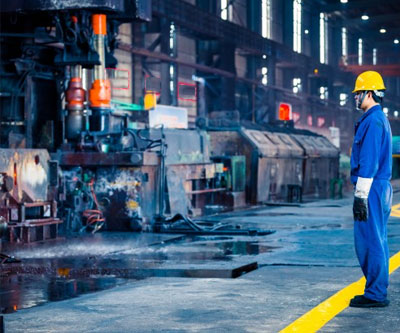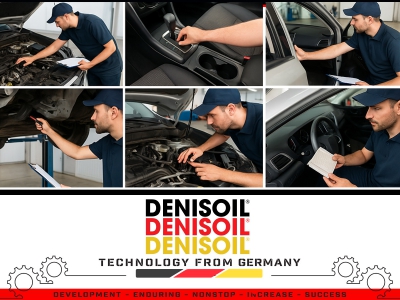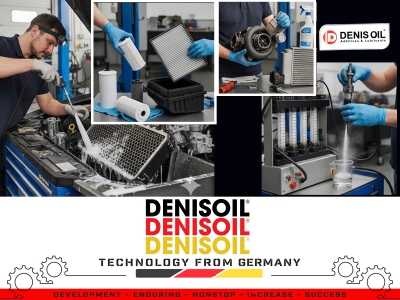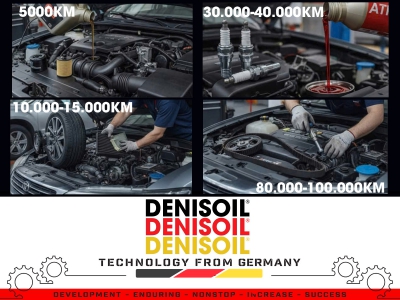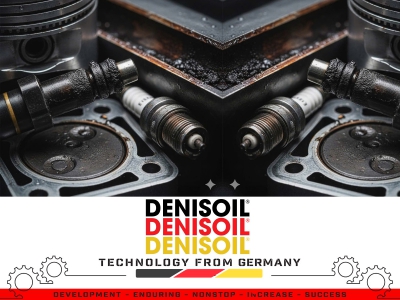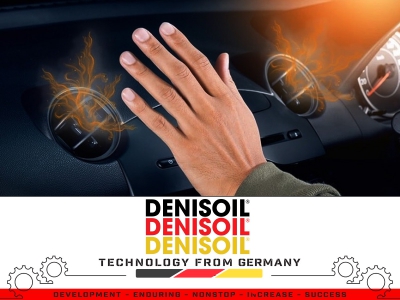Recognition and Treatment of Engine Oil Contaminated with Water or Fuel
1. Signs of Engine Oil Contaminated with Water
- Color & Appearance:
- Oil turns milky brown or whitish (emulsion, like coffee with milk).
- White foam appears on the dipstick or oil filler cap.
- Odor: loses characteristic smell, develops musty or rancid odor.
- Laboratory Test Parameters:
- Water content (ASTM D6304 – Karl Fischer) exceeds the permissible limit (≤ 0.1%).
- Kinematic viscosity (KV40/KV100 – ASTM D445) abnormally decreases.
- TAN (Total Acid Number – ASTM D664/D974) increases due to additive hydrolysis.
- Operating Symptoms:
- Engine is hard to start, vibrates, emits white-blue smoke.
- Signs of bearing corrosion, cylinder scoring appear early.
2. Signs of Engine Oil Contaminated with Fuel (Gasoline)
- Color & State: oil becomes abnormally thin, darker.
- Odor: distinct raw fuel smell on the dipstick.
- Laboratory Test Parameters:
- Kinematic viscosity KV40/KV100 significantly reduced due to dilution.
- Flash Point (ASTM D92) drops from >200 °C to ~100–120 °C.
- Operating Symptoms:
- Increased fuel consumption, black exhaust smoke.
- Engine misfires, knocking noise, spark plugs fouled with carbon deposits.
3. Common Causes
- Water contamination:
- Radiator leaks, damaged head gasket, cracked engine block, failed oil/water cooler.
- Moisture condensation when vehicle is seldom used or in humid climates.
- Fuel contamination:
- Leakage in fuel injection system, excess fuel draining into crankcase.
- Improper operation (long idling, repeated short-distance starts).
4. Special Case: Engine Oil Contaminated with Water Due to Flooding
- Ingress Mechanisms:
- Water enters via air intake → combustion chamber → crankcase → mixes with oil.
- Backflow through PCV (Positive Crankcase Ventilation) system.
- Seepage through gaskets and seals under water pressure.
- In deep flooding, entire engine submerged, turning into a “tank” mixing oil with water, mud, debris.
- Characteristics of Oil After Contamination:
- Severe emulsification, milky color, foamy.
- Loss of viscosity, lubrication film breakdown.
- Accelerated oxidation and corrosion from salts, microorganisms, and contaminants in floodwater.
- Formation of sludge, blocking oil passages.
- Engine Consequences:
- Bearings, pistons, cylinders wear rapidly, risk of seizure within minutes.
- Oil pump loses pressure due to oil-water mixture.
- Turbocharger, camshaft bearings corrode quickly.
- High risk of hydrolock on restart.
5. Remedies & Corrective Actions
- Immediate Actions:
- Do not start the engine after flooding.
- Drain all engine oil and replace oil filter.
- Flush crankcase multiple times with flushing oil or light oil, replace filter.
- Root Cause Repairs:
- For water contamination → inspect radiator, head gasket, oil/water cooler.
- For fuel contamination → inspect injectors, high-pressure pump, ignition system, spark plugs.
- Additional Checks:
- Replace air filter, spark plugs, injectors if exposed to water.
- Check coolant, replace if contaminated.
- Perform compression test, inspect bearings, overhaul engine if heavily affected.
6. Technical Recommendations
- After treatment, take an oil sample after 200–1,000 km for laboratory analysis:
- ASTM D6304 (water content)
- ASTM D445 (viscosity)
- ASTM D5185 (wear metals)
- ASTM D92 (flash point)
- If water or metal content (Fe, Cu, Pb) is high → perform complete mechanical inspection.
- In flood-prone areas:
- Shorten oil change interval (5,000 km instead of 8,000–10,000 km).
- Use engine oils with anti-rust and good water-separation additives.
 Tiếng Việt
Tiếng Việt
 Chinese
Chinese
 English
English


